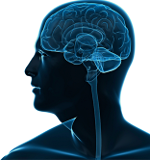May 28, 2025
Falls account for two-thirds of TBIs in adults over 65. Preventing falls is therefore key to mitigating the risk of TBI. Falls can happen to anyone and can lead to tragic consequences, even where there is no visible injury. A good example is the death of actress Natasha Richardson in 2009 at Mount Tremblant ski resort. Ms. Richardson fell and struck her head while skiing with an instructor. She never lost consciousness and was able to stand and resume skiing after her fall. She initially seemed fine and declined treatment but later in the night began to complain of severe headaches. She was rushed to the hospital, lapsed into a coma, and died two days later from an epidural hematoma – an accumulation of blood between the skull and the membrane covering the brain. Read More
September 17, 2020
Studies over the last several years have shown that the lymphatic system serving the brain, located in the membranes covering the brain (the “meninges”) plays an important role in brain injury recovery.
As most people know, the lymphatic system helps to rid the body of toxins and waste, including the byproducts of the body’s immune response to injury. For brain injury this is sometimes described as “damage/danger-associated molecular patterns” – “DAMPs” – such as protein aggregates, necrotic cells, and cellular debris.
Researchers at the University of Virginia, at the Center for Brain Immunology and Glia, have released an important study furthering our understanding of the role meningeal lymphatic dysfunction plays in causing some patients to suffer severe and long-lasting impairments following even a “mild” traumatic brain injury (TBI) and helps to explain why these injuries increase the risk for neurodegenerative problems such as Alzheimer’s, ALS and dementia. Read More
February 3, 2015
The New England Journal of Medicine has published the most exhaustive analysis to date of brain injury in children and adolescents. The results reinforce the critical importance of safety helmets for children under 12 and the importance of safety helmets and seatbelts for adolescents.
The data analyzed in the study was from over 40,000 pediatric brain injuries. The most common cause of trauma in children under 12 was falls, often from bicycles. Motor vehicle accidents, sports injuries and assaults were the most frequent mechanisms of injury among adolescents. Read More
May 7, 2013
Did you know that you could reduce the chance that you, your family and loved ones will have a brain injury? You can! Just follow these helpful tips from the Centers for Disease Control and Prevention (CDC).
Read More
